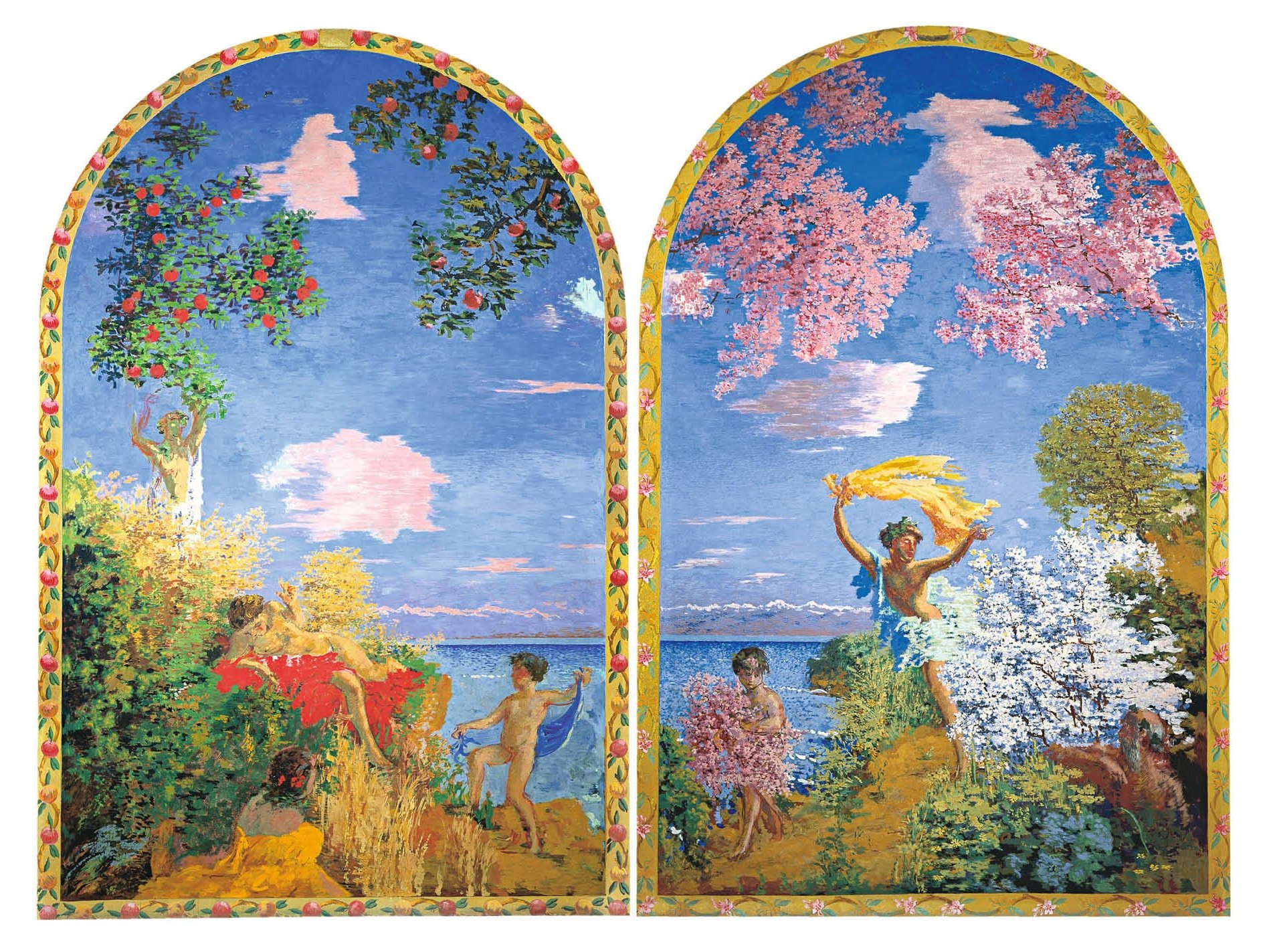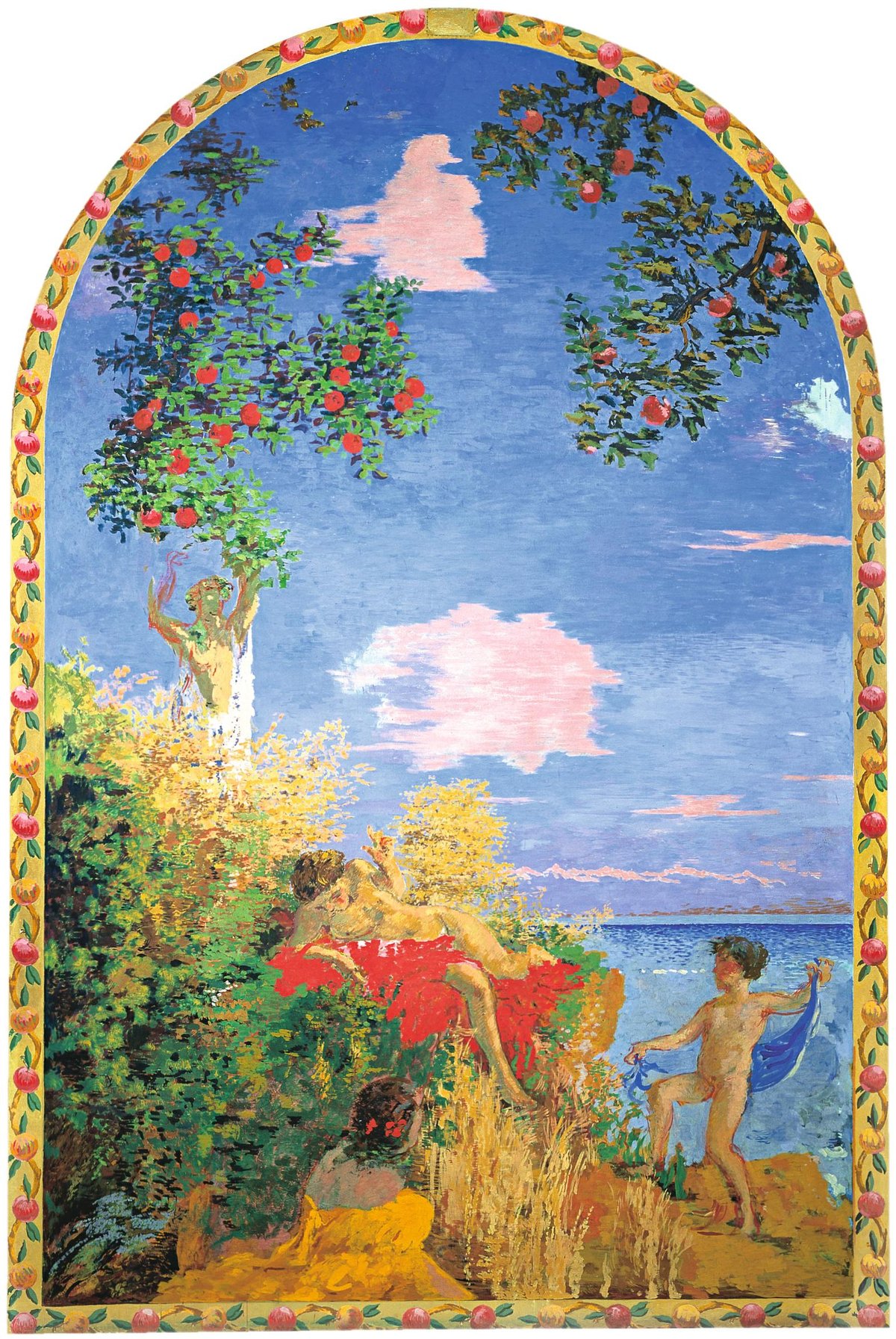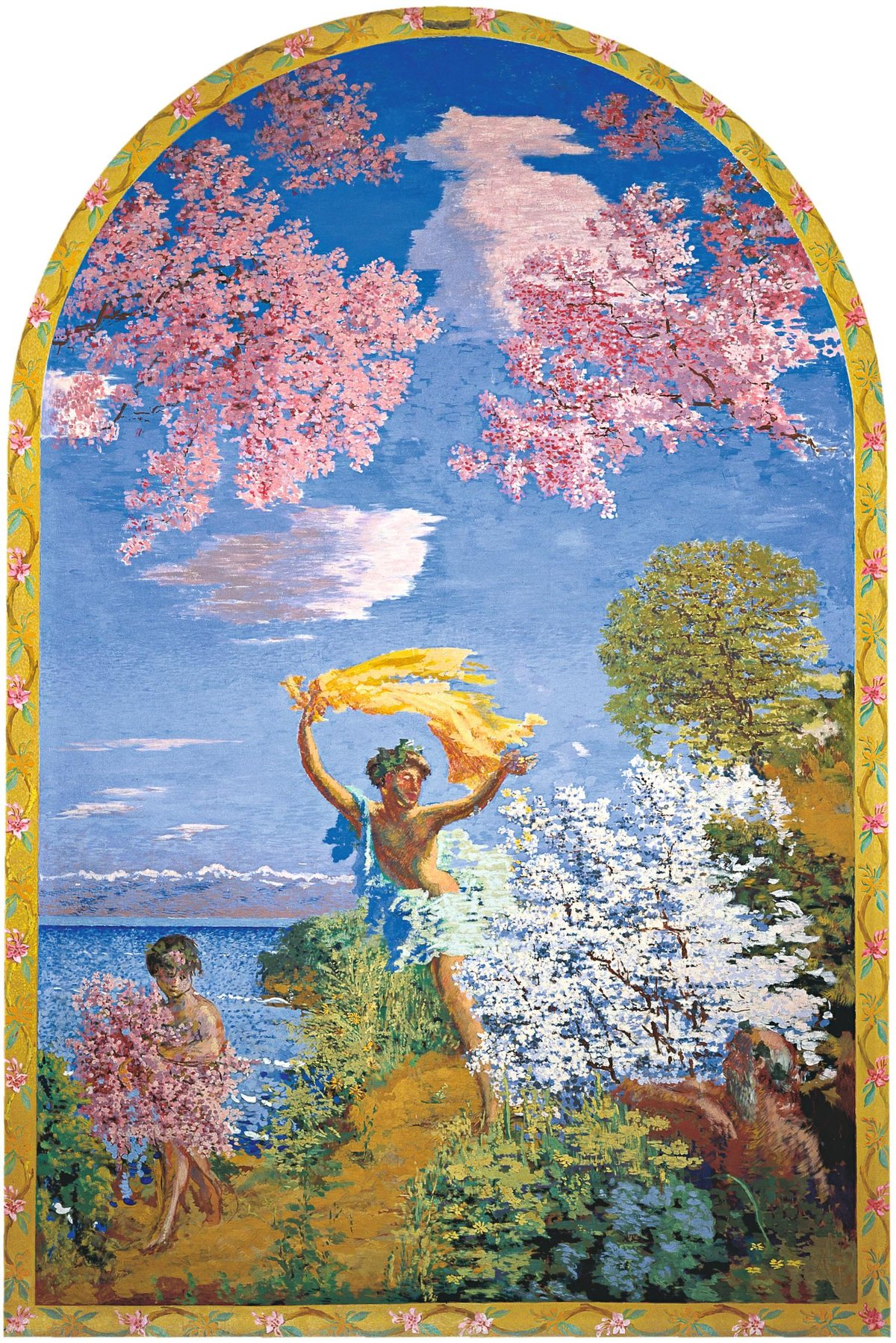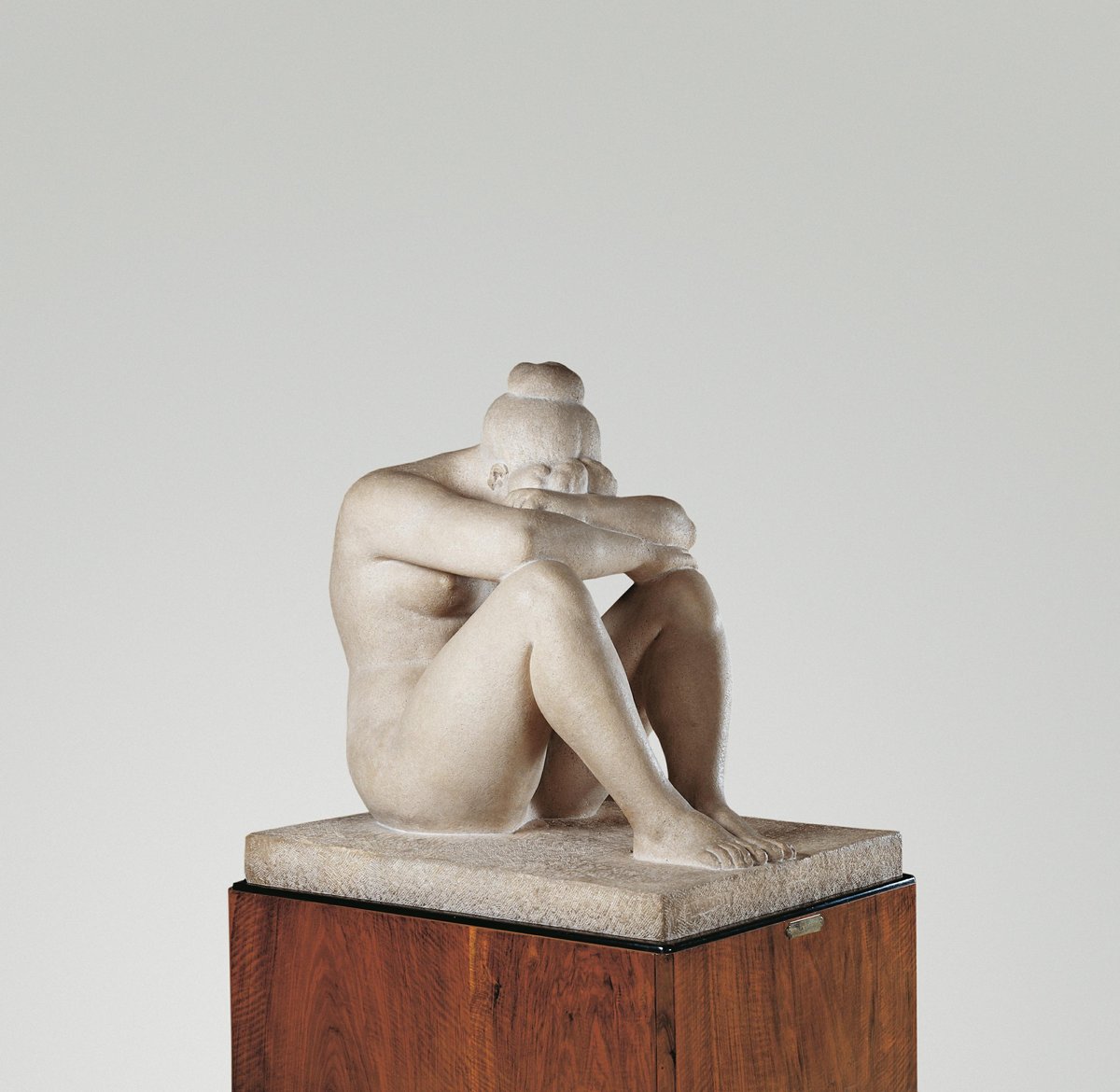Ker-Xavier Roussel
Murals, 1916–1918/1926

Ker-Xavier Roussel
Autumn and Spring, 1916–1918, überarbeitet 1926
Kunst Museum Winterthur, Schenkung von Hans und Werner Reinhart, 1918
Foto: Hans Humm, Zürich
Ladies and gentlemen, welcome to the Kunst Museum Winterthur, and welcome to our tour that begins here in the stairwell of the museum.
Our museum was opened in 1916, yes, in the middle of the First World War. It was an ambitious enterprise in a town that at the time had just 20,000 inhabitants. Some Winterthur citizens wished to bequeath a museum of international standing to the town, and made this possible by financing a large part of the building costs. Robert Rittmeyer, a Winterthur architect was selected who designed not only the building, but the interior furnishings as well. The stairwell is clad in marble, while the exhibition rooms are equipped with wooden panelling and wall coverings. Thus, an air of elegant representation in the foyer is contrasted with the atmospheric intimacy of a domestic reception room in the art exhibition. The Kunstmuseum is located on the First Floor. The Parisian art dealer Ambroise Vollard paid the new museum a visit in 1916 and praised it «as a temple, constructed in the genius of French art». And we have some significant works by French artists here in the stairwell that create the right atmosphere for viewing the collection.

Ker-Xavier Roussel
Autumn, 1916–1918, überarbeitet 1926
Kunst Museum Winterthur, Schenkung von Hans und Werner Reinhart, 1918
Foto: Hans Humm, Zürich
There are two large format wall paintings by Ker-Xavier Roussel decorating the staircase. During his youth Roussel, like Bonnard, Vuillard, Vallotton and Maillol belonged to a group called the Nabis. During the First World War he lived near Lake Geneva and in 1916 brothers Hans and Werner Reinhart invited the painter to Winterthur, to discuss the design of the new museum. Roussel was given the contract and spent a long time working on the pictures in his studio. They were mounted in 1919.
Roussel chose the four seasons – an established art historical subject. But Roussel portrayed only two of the four – autumn on the left, and spring on the right, thus blossoming and ripeness are celebrated in vivid colours.
A shared horizon line connects the two scenes and because Roussel’s treatment of the figural world of the Golden Age was very liberal they contain no specific antique myths. In 1926 Roussel returned to Winterthur once more and thoroughly reworked the paintings, this included the introduction of the Borders with fruit ornamentation.

Ker-Xavier Roussel
Spring, 1916–1918, überarbeitet 1926
Kunst Museum Winterthur, Schenkung von Hans und Werner Reinhart, 1918
Foto: Hans Humm, Zürich
In the upper foyer you will see a further work by a French artist: a large stone figure by Aristide Maillol with the title La nuit. It was also a gift: donated by five ladies from Winterthur when the museum opened. Like Roussel, Maillol also turned to the world of classical antiquity. He sought the perfected form, the concentration on the bare essentials that were in contrast to the fleeting sketches of Impressionism.
The Night constitutes a culmination of his work. The Night is a seated female figure, with her head bowed between her arms, her elbows placed on her knees. As already suggested in the title, the figure is resting, self-absorbed.The sculpture has been designed and constructed with great attention to detail. The massive, heavy body is a cube, the limbs making triangular forms within it. The exterior surfaces are evenly lit, at the same time allowing a perspective of the shadowy internal regions. The Cube is the epitome of proportion and perfection. With The Night, Maillol created a work that clearly expresses his classical idea of sculpture.

Aristide Maillol
The night, um 1908–1912
Kunst Museum Winterthur, Ankauf mit Spenden von Emma Sulzer-Forrer, Marta Keller-Bühler, Olga Reinhart-Schwarzenbach, Annie Biedermann-Mantel und Elisabeth Sulzer-Weber, 1916
Foto: SIK-ISEA, Zürich (Lutz Hartmann)


